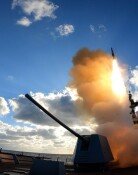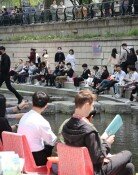NK Names 8 Cities `Special Economic Zones`
NK Names 8 Cities `Special Economic Zones`
Posted March. 03, 2010 09:17,
North Korea has designated eight cities including Pyongyang as special economic districts, and will form a financial institution for infrastructure investment such as for roads and railroads, a Japanese daily reported yesterday.
The Nihon Keizai Shimbun said North Korea is also considering tax incentives for investment in such zones to attract foreign companies and investment.
North Korea has designated allocated priority industries for cultivation in the eight cities: Pyongyang (high-tech industry); Nampo (medical supplies and cooking oil); Shinuiju (light industry and textiles); Wonsan (shipbuilding); Hamhung (coal and chemicals); Kimchaek (metallurgy); Nason (petrochemicals); and Chongjin (heavy industry).
Additionally, the communist country will expand investment in infrastructure, including massive construction of roads and railroads linking the eight cities.
Pyongyang will induce foreign capital through tax incentives to finance its projects to foster the economic zones and expand and upgrade infrastructure. Quoting an official of North Koreas Trade Ministry, the Japanese daily said, Egypt, France and Vietnam have expressed a strong intent to invest in North Korea.
A source from the Taepung International Investment Group, which is reportedly effectively leading North Koreas new economic policy, was also quoted as saying, Were considering leasing farmland in turn for cutting-edge agricultural technologies.
The company is headed by Kim Yang Gon, confidant of North Korean leader Kim Jong Il and director of the Unification Front Department of the ruling Workers` Party. Taepung has 25 subsidiaries including those dealing in finance, investment, credit and insurance and corporations in railroads, roads and farming.
North Korea will also set up a national development bank through which its government will issue financial guarantees to help attract foreign capital in mid-March. Pyongyang apparently referred to the case of China, which established such a bank in 1994 and improved its infrastructure and advanced development of rural areas.
The North Korean development bank will have paid-in capital of 10 billion U.S. dollars and will be co-owned by the North Korean government and the investment company Taepung a 70-30 ratio.
North Koreas new economic policy benchmarks to a large extent the Chinese model of reform and market opening. The policy apparently shows Pyongyangs bid to promote its market opening to the world.
China introduced tariff reductions in special economic districts early in its economic reform and marketing opening, but later adopted them throughout the country in the 1990s. Likewise, Pyongyang expects such a policy could bring about similar effects for North Korea.
Critics say, however, that the economic zones and the plan to attract foreign capital were measures Pyongyang announced when it designated the Rajin-Sonbong region as a special economic district in 1991. Hence, they add, the latest measure does not indicate a change in policy.
Kang Yong-beom, a professor at Yanbian University in China, said, South Korean aid to the North has declined since the inauguration of the Lee Myung-bak administration in the South. So North Korea has learned that its brinkmanship policy no longer works.
It is premature to predict whether Pyongyang will succeed in this move due to fierce internal debate over adoption of the Chinese model.
changkim@donga.com







